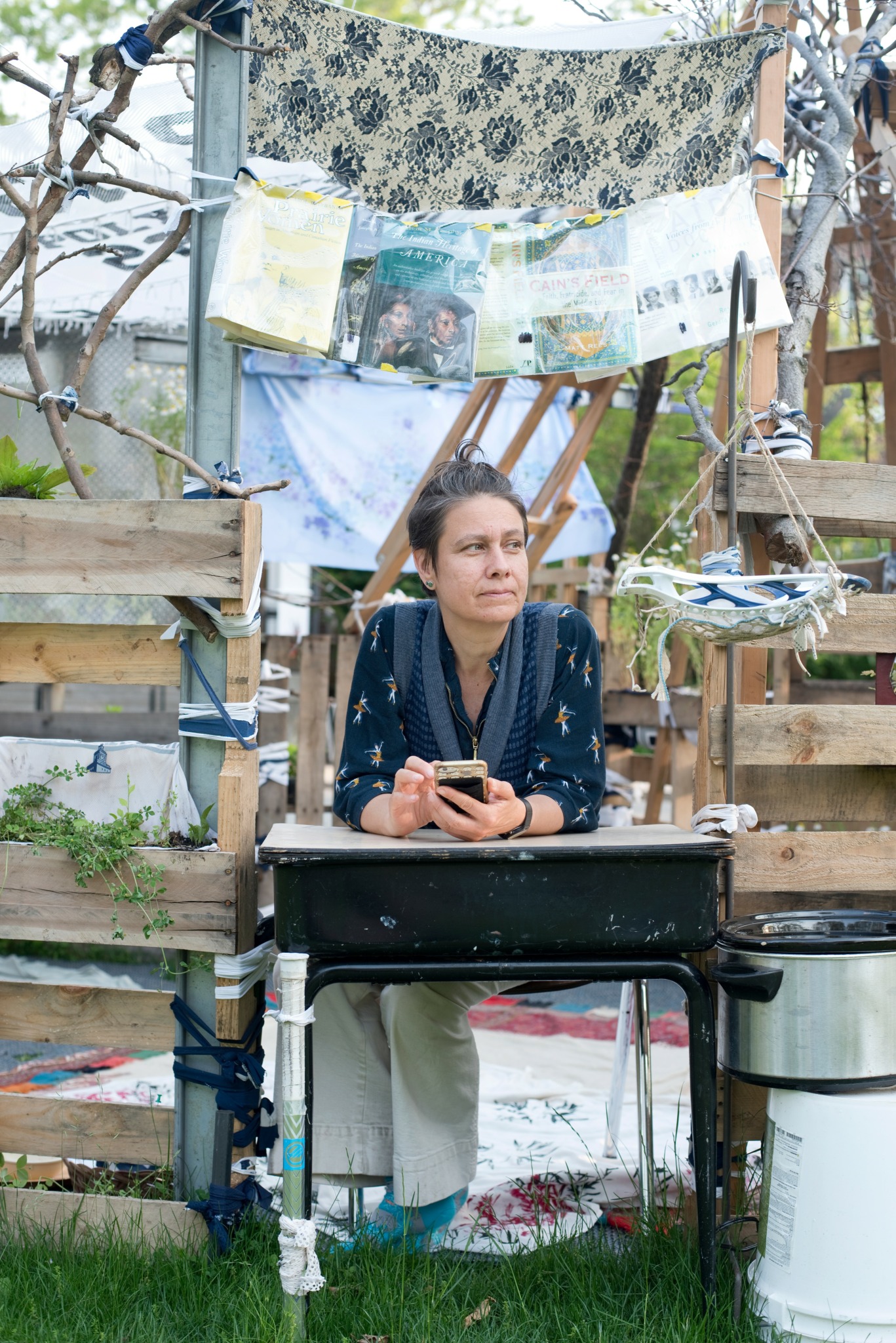We’re excited to introduce you to the always interesting and insightful Jill Sigman. We hope you’ll enjoy our conversation with Jill below.
Alright, Jill thanks for taking the time to share your stories and insights with us today. We’d love to hear the backstory behind a risk you’ve taken – whether big or small, walk us through what it was like and how it ultimately turned out.
I build site-specific structures out of trash. Called The Hut Project, my structures are used as gathering spaces for
performance, community dialogues, micro-agriculture, food sharing, and workshops. They shine a light on issues about environmental justice,
waste equity, sustainability, and refuge. About five years after I started doing this, I was commissioned to build one
of these huts out of electronic waste in Aarhus, Denmark in connection with composer Line Tjørnhøj’s opera Tomorrow’s Child.
I use extremely primitive methods to build the huts—in fact,
I began by binding them together with ace bandages because I found a few hundred bandages that someone was
throwing away and I thought the pathos and futility of that was really beautiful. When I ran out of bandages, I started
to use everything from elastics to shoelaces to ripped up T-shirts and old socks. But e-waste is heavy! And a whole
hut of e-waste—built of printers and microwaves and water coolers would be a huge risk. Could I do it? Could I build
something out of heavy electronics held together with only elastics and mud? The stakes were high because I was
supposed to open the hut to the public in only a week. I couldn’t risk the structure falling down and hurting someone.
But I didn’t want to just screw things together like a garden shed out of Home Depot. The huts are about precarity,
how crazy our systems of consumption and disposal really are, how fragile the earth is. So I stuck to it and worked to
create methods of stacking and tying the electronics. And they held!! We did multiple performances, served food, and greeted people
in the hut, and it didn’t even shift once!
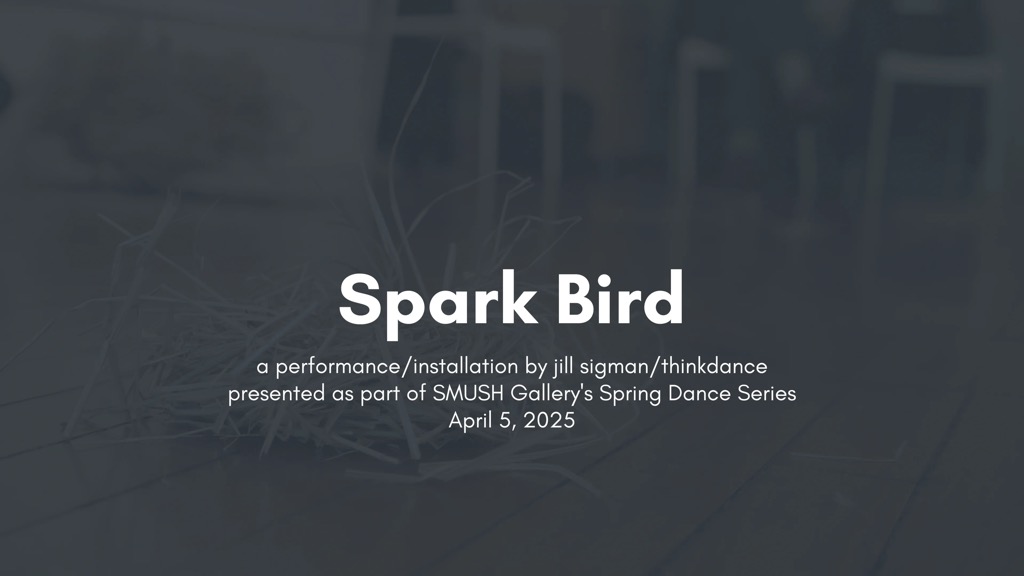
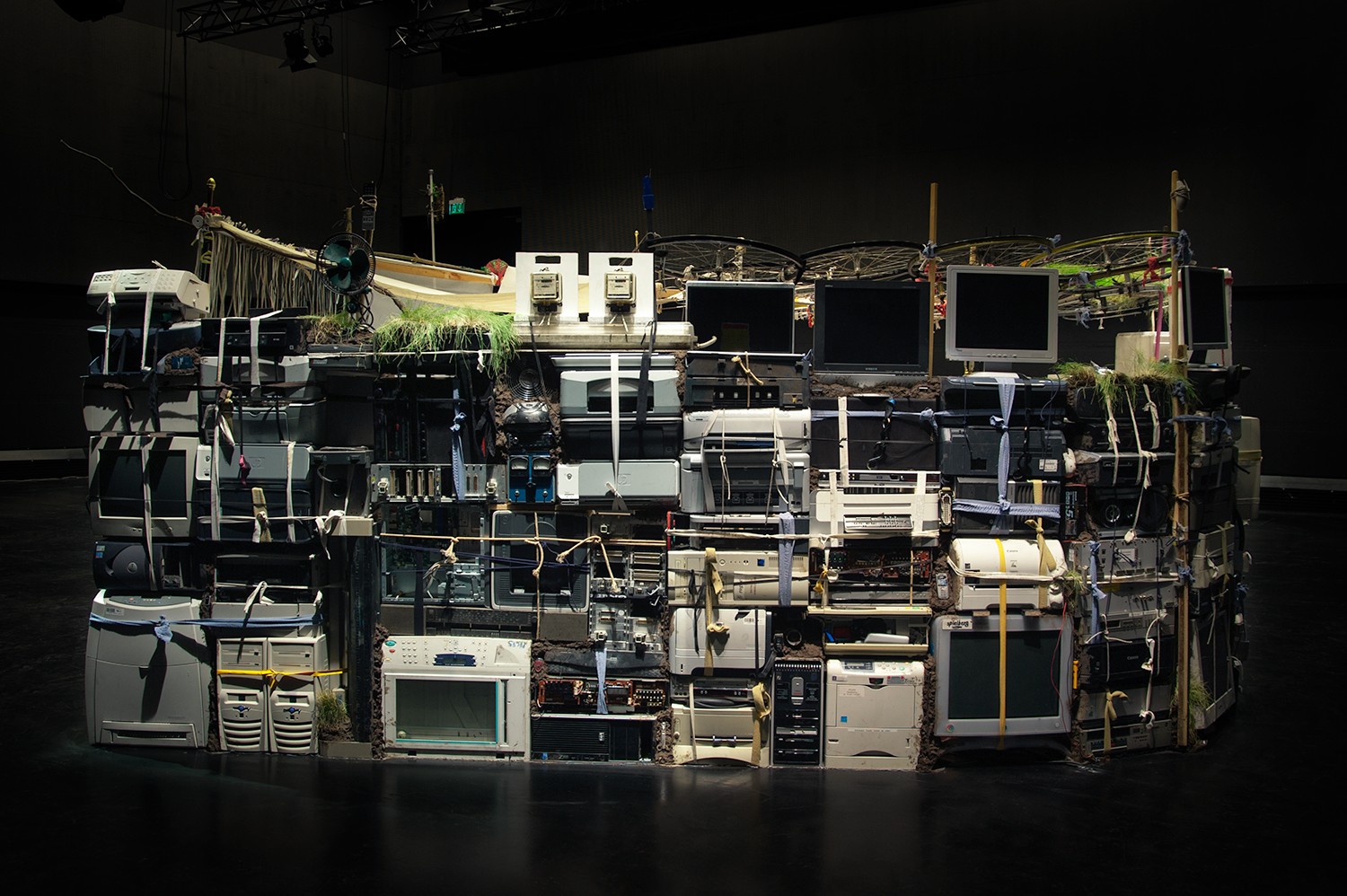
Awesome – so before we get into the rest of our questions, can you briefly introduce yourself to our readers.
My name is Jill Sigman. I am a choreographer, interdisciplinary artist, and agent of change. I work in the intersection
between dance, visual art, and activism. Way back, I went to grad school in analytic philosophy. When I got done, I
wanted to use my art to ask the questions philosophers were asking in words. So I founded a dance company called
jill sigman/thinkdance. I started asking questions about social, cultural, and environmental issues in an embodied
way. Over the years I founded an incubator for artist-activists called Body Politic and a Social Justice Movement Lab
for artists who want to explore movement as a tool of social change. I have worked with partners as diverse as
immigration activists and asylum seekers, formerly incarcerated prison abolitionists, urban farmers, constitutional
lawyers, compost educators, anthropologists, bird watchers, permaculturists, and sanitation workers. I make artistic
work to allow us to think about things that are important questions of our time, and to let us into these messy issues
through the back door. I just completed a performance installation called Spark Bird at SMUSH Gallery in Jersey City.
It’s about hospitability and toxicity in our urban habitats. I collaborated with the Feminist Bird Club of Jersey City.


We’d love to hear a story of resilience from your journey.
Any advice for growing your clientele? What’s been most effective for you?
You have to meet people on their terms and you have to do what you do best. I hate traditional marketing. I hate
social media. But I am a forager and I love brewing tea out of wild plants. I have a project called Weed Heart that is
all about that. So I set up camp and make weedy tea in all kinds of places, and this lets me talk with people about my art.
People love to taste the tea and hear about the plants and often they want to see the live performance that is
connected to this—because now they are guests and not consumers.
I also have a project called The Hut Project where I build site-specific structures out of waste—things people throw
away. I go around collecting trash in all different parts of the world and I ask people to donate things or to tell me
where I can find “the best garbage”. People are always afraid you’ll want something from them—until they realize you
want their garbage! And then they are happy to talk with you, donate objects, tell you stories, and go out of their way
to help. I have met so many amazing people and brought them into the orbit of my artistic work in that way.

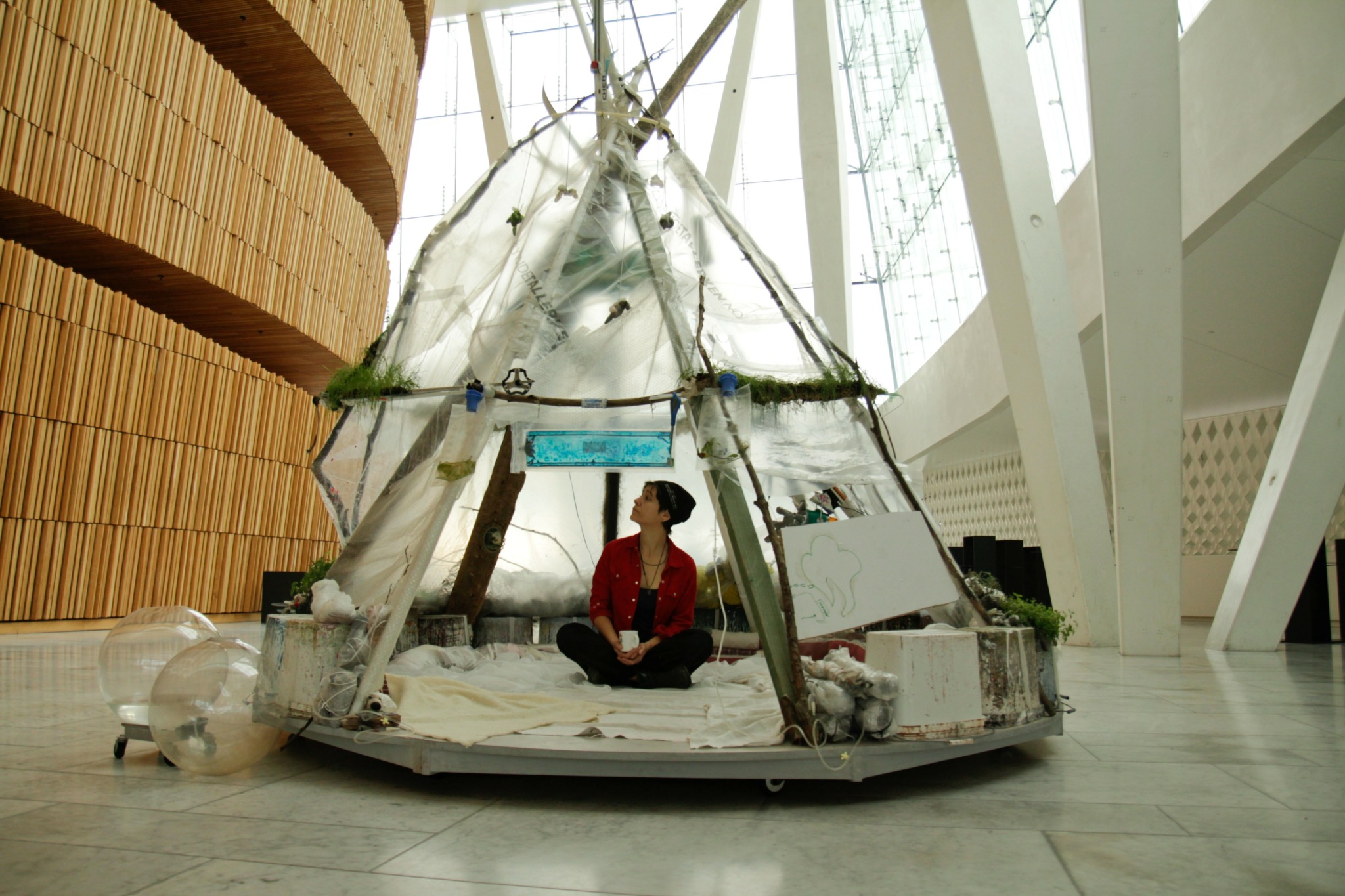
We’d love to hear a story of resilience from your journey.
The way I grew up in dance, there was a traditional touring model. You were expected to start a dance company and
take it on tour. And over the course of my career, I’ve watched that model die. It’s unrealistic; it doesn’t work for most
people, either financially or in other ways that the field is organized. So instead of trying to do the impossible, I
created a new model. I started working with waste and I took that ability on the road. There is, disconcertingly, a constant
supply of garbage everywhere you go and it’s free! So I would go to a site, with only myself, work with folks there to
collect garbage, and build a structure out of it that became a container for my performances—a stage and a gathering
space and a temporary home. That’s how The Hut Project was born. I have built 12 site-specific structures out of
waste in different parts of the world, built with everything from moose bones to plastic flamingos, and been able to
make my artistic work, meet people, talk about what we are doing to the environment, and even write a book about it
(Ten Huts, Wesleyan University Press, 2017).
Contact Info:
- Instagram: thinkdance
- Facebook: Jill Sigman Thinkdance
- Other: [email protected]

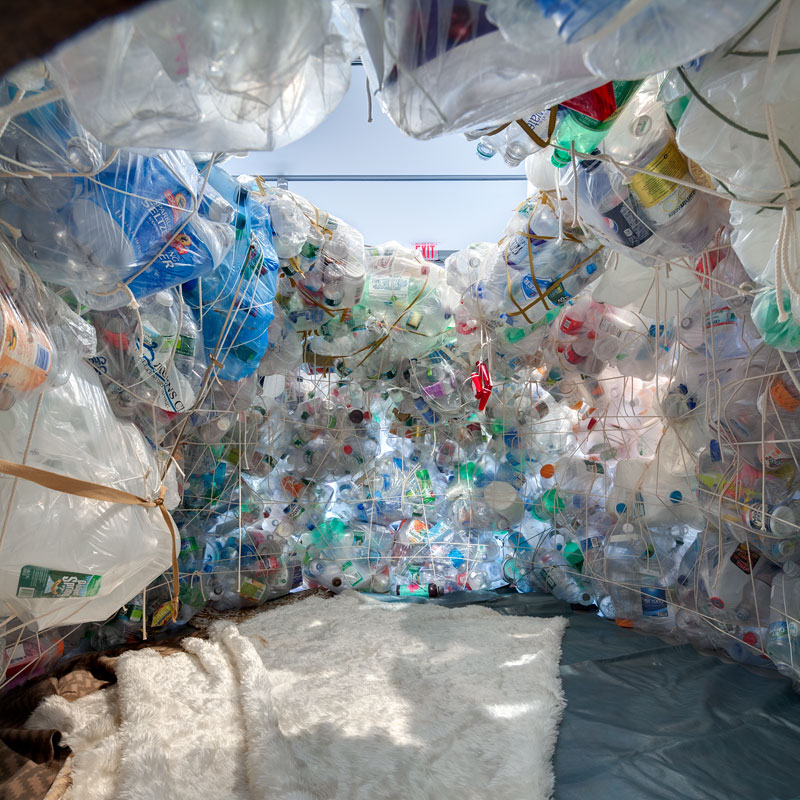
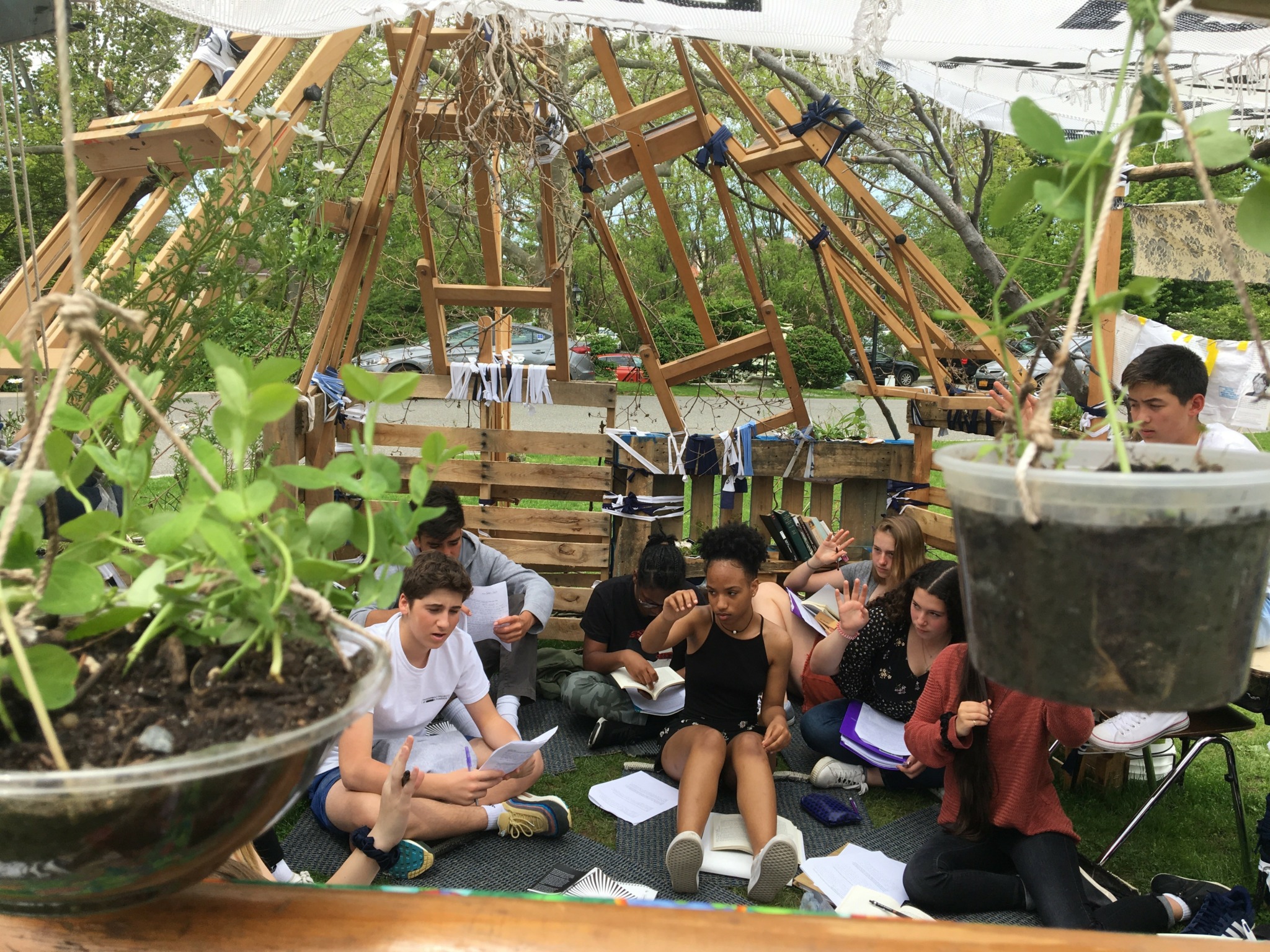
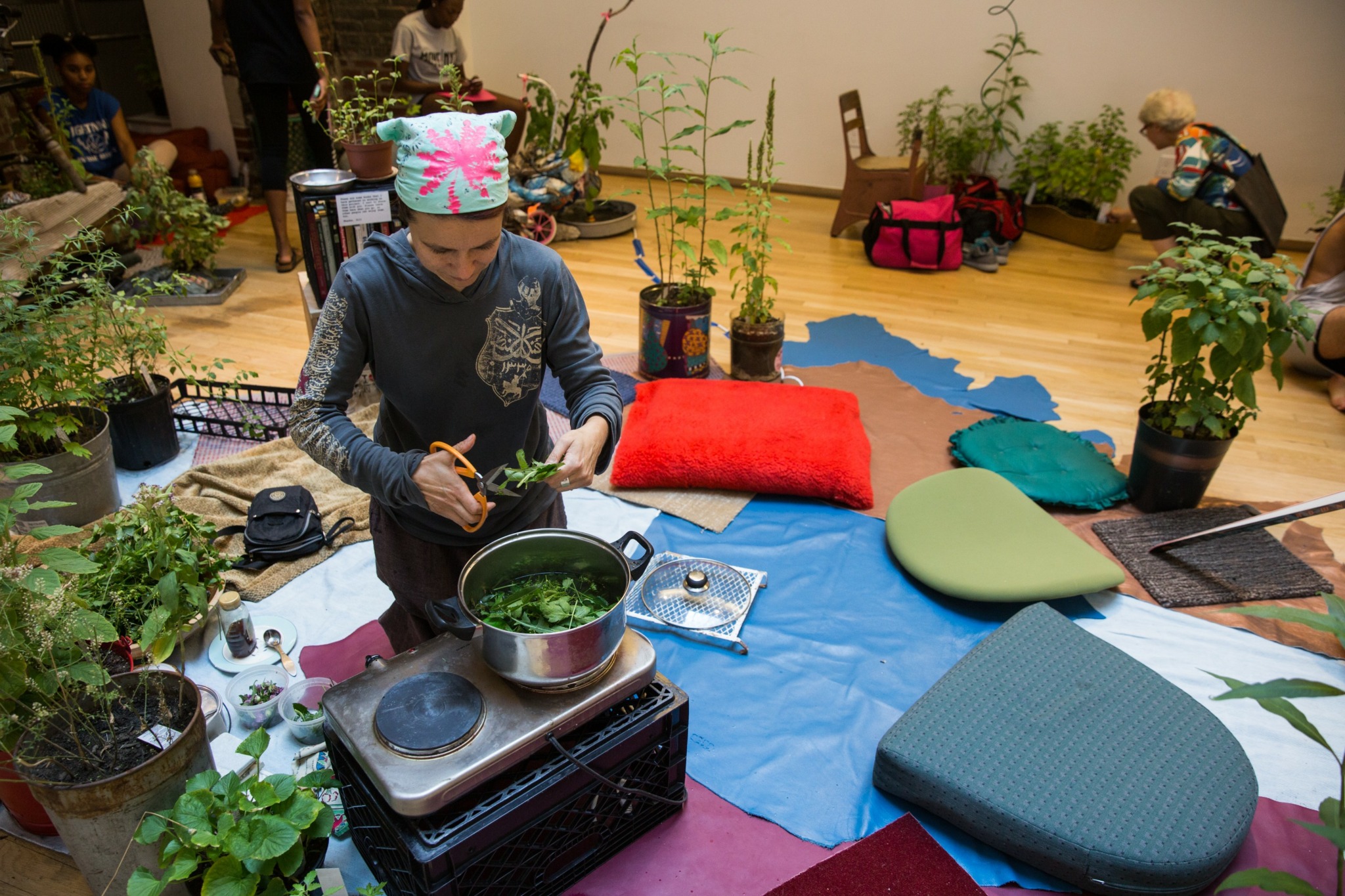



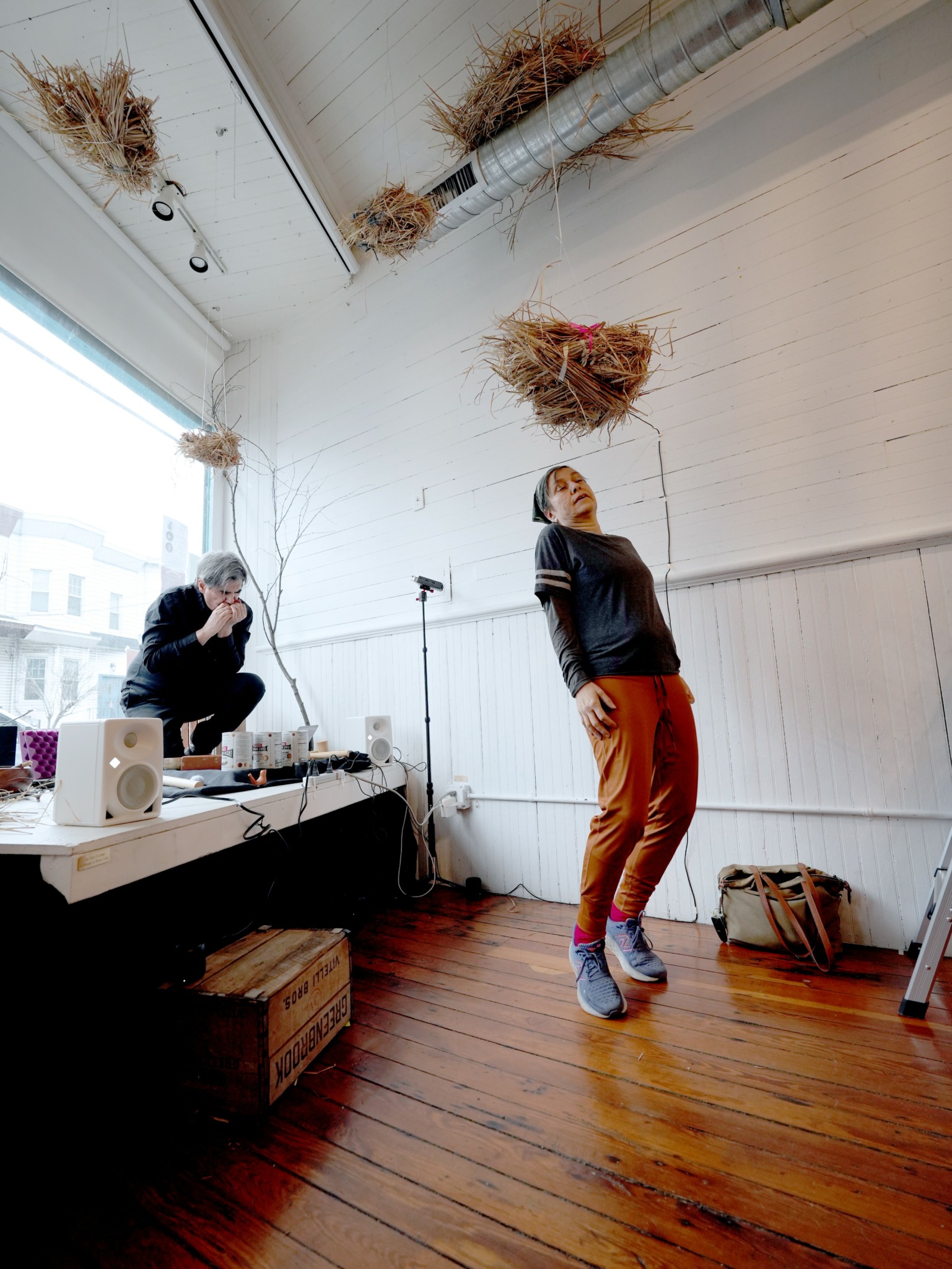

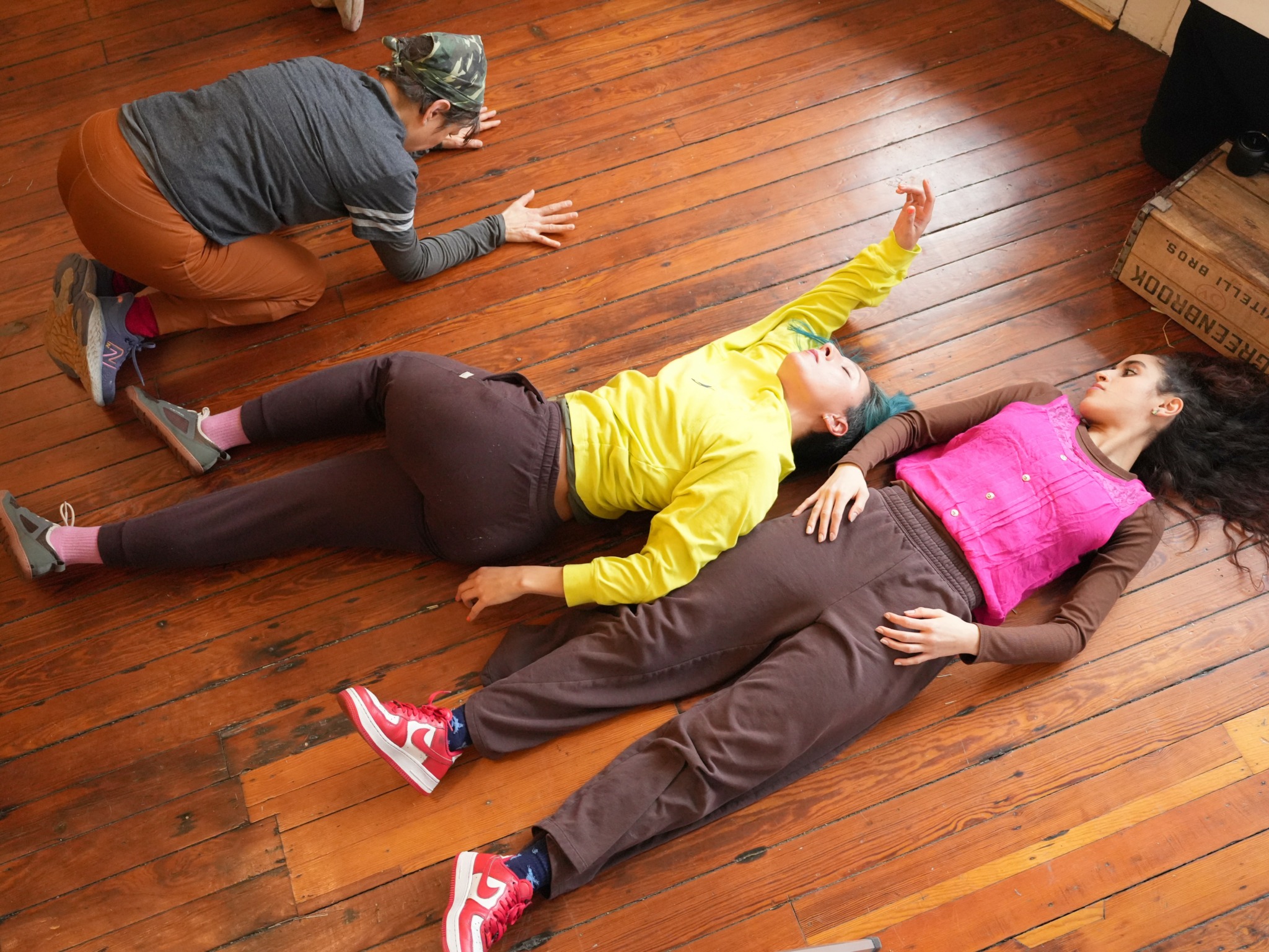

Image Credits
Jill Sigman at Hut #12 – Vanessa Albury
Spark Bird Video – NonLinear Knitting
Hut #9 – Alejandra Ugarte
Hut #9 – Elisabeth F. Lund
Building Hut #9 – Elisabeth F. Lund
People gathering in Hut #9 – Louis Kirkegaard
Hut #6 – Elisabeth F. Lund
Hut #7 (Interior) – Rafael Gamo
Hut #8 (Interior) – Rafael Gamo
School class in Hut #12 – Jill Sigman
Weed Heart – Scott Shaw
Making Tea – Scott Shaw
Spark Bird (Jill Sigman) – Jan Mun
Spark Bird (Jill Sigman, Kenia Rosete, Rosalia Saver) – Jan Mun
Spark Bird (Gustavo Aguilar, Jill Sigman) – Jan Mun
Spark Bird (Jill Sigman) – Jan Mun
Spark Bird (Jill Sigman, Kenia Rosete, Rosalia Saver) – Jan Mun
Spark Bird – Jan Mun


